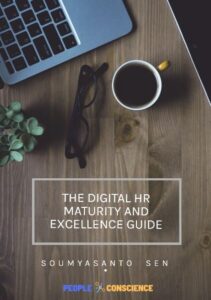In a recent New York Times article, The Utter Uselessness of Job Interviews, Jason Dana, Assistant Professor of Management and Marketing at the Yale School of Management, explores the biases surrounding the unstructured interview process. He observes that:
“…interviewers typically form strong but unwarranted impressions about interviewees, often revealing more about themselves than the candidates.”
Throughout the article, Dana cites, Belief in the Unstructured Interview: The Persistence of an Illusion, a study he conducted in 2013 with 140 student subjects. To test the effectiveness of interviews in predicting a student’s GPA, Dana broke students into two groups. While both sets of students used past GPA and course schedule to make predictions, only one group was interviewed. The results of the study showed that GPA predictions were more accurate for the students not interviewed. In other words, the interviews muddled the data and negatively impacted the decision-making process.

Conversations Are Biased
Something occurred during the interviewing process that led the interviewer to misidentify which interviewees were best qualified and thus most likely to succeed. This ‘something’ is the collection of biases that often come up through the course of conversation or what we, at Wade & Wendy, refer to as conversational bias.
Conversational bias is the set of biases that influence the quality and quantity of data extrapolated during the course of a conversation. At a high level, it includes two key components:
- Set of biases refers to external factors, including everything from confirmation biases and preconceived notions to physical environment and mood, that influence how a person engages in a conversation.
- The quality and quantity of data refers to the information learned during the course of a conversation and how helpful it is in facilitating good decision-making.
The data learned through conversation is inherently incomplete and/or misleading due to the external factors and biases that influence engagement and perception. This is clearly demonstrated in the study above, where subjects were better able to identify future success for students whom they had never met over students that they had met. While not explicitly referred to as ‘conversational bias,’ the issues it perpetuates have been studied time and time again.
Interviews Are Biased
There is information asymmetry between the data learned in a job description and the data learned from a resume. Former SVP of People Operations at Google, Laszlo Bock, says about this paradigm:
“[having] a taxonomy of skills and abilities that are hard to articulate, and resumes don’t do a good job of capturing them. Employers have a set of jobs, but are terrible at both articulating what they need, and actually filtering candidates.”

Essentially, the two forms (resume and job description) used to determine a job seeker’s ability to fulfill the requirements of a job both contain incomplete data. It is for this reason that a conversation — often in the form of an initial phone screen or a first-round interview — is necessary to resolve this asymmetry. This initial conversation allows candidates to better understand the requirements of the job and allows hiring managers to gather information not found in the resume.
It is at this point in the hiring process that conversational bias comes into play.
For example, imagine a hiring manager has a full day of interviews lined up. Throughout the day, he/she becomes increasingly fatigued and, as a result, asks poorer questions and takes fewer notes as the day goes on. Because the conversation and the subsequent data gathered about each candidate is different, it becomes impossible to compare candidate to candidate accurately.
The Problem
In Dana’s Belief in the Unstructured Interview study, GPA, course schedule and an interview were used to predict future success. Results showed that the assessments were less accurate when interviews were included in the decision-making process. In effect, the interviewers were counterproductive.
The Other Problem
To fill the information gap that exists between resume and job description, a conversation must take place. Applicants need clarification on the requirements of the role, just as hiring managers need to gather information not found within the resume.
The Paradox
These problems present two interesting concepts: 1) Conversations are biased and 2) Conversations are necessary. This is what we, at Wade & Wendy, call “The Conversation Paradox.”
Looking Ahead
While the very act of conversation has been proven to introduce numerous biases, it remains a critical part of the hiring process. To date, many solutions have been proposed, such as Dana’s suggestion to use structured interviews, but these solutions do not go far enough. Rather,
- What if there were an artificially intelligent tool smart enough to have a conversation without bias?
- What if there were an artificially intelligent tool agile enough to converse with 100% of candidates 100% of the time?
At Wade & Wendy, we are eagerly working on this solution. To join the conversation, chat with us on Twitter… We’re passionate about conversation, after all: @wadeandwendy.
This article has been written by Bailey Newlan, is the Content & Growth Marketer at Wade & Wendy and originally published in The HR Tech Weekly® blog.


